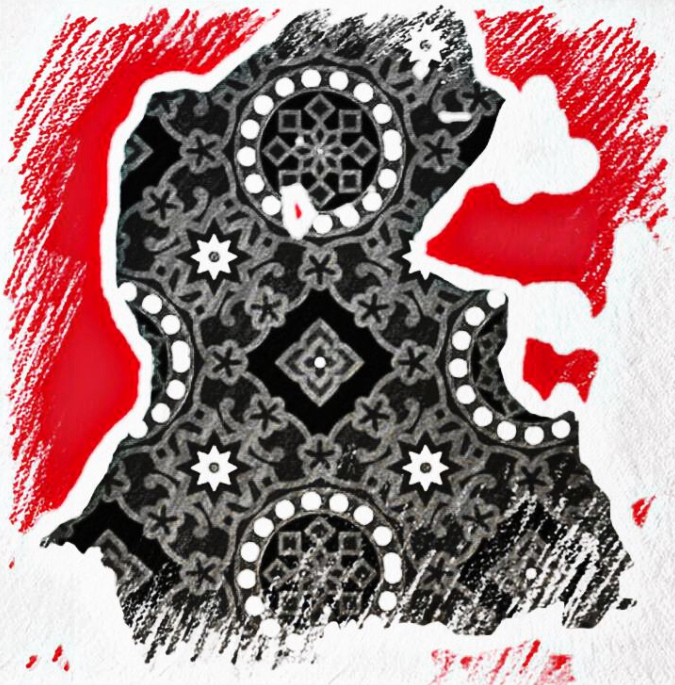
The movement has not been examined for itself but only from the vantage point of its success or failure. The article focuses on how three generations of Muslim men, who shared similar trajectories yet have unique social characteristics and repertoires of contention, constructed, reinforced, and disseminated the Sindhi nationalist discourse.
Julien Levesque
[The study of Sindhi nationalism has remained over-determined by the question of the allegiance of Sindhis to the Pakistani state. The movement has not been examined for itself but only from the vantage point of its success or failure. As a result, it has mainly received attention when sudden outbursts of violence seemed to threaten the stability of the state. However, few have attempted to examine what connects disparate events of ethnic violence and opposition to the central state with a broader understanding of what being Sindhi entails. Rather than address questions of failure or success, this article shows that the construction of a nationalist “idea of Sindh” has been a continuous process throughout the twentieth and twenty-first centuries. It also illustrates how an aspirational middle-class played a central role in this process. The article focuses on how three generations of Muslim men, who shared similar trajectories yet have unique social characteristics and repertoires of contention, constructed, reinforced, and disseminated the Sindhi nationalist discourse. This process translated into institution-building in the cultural sphere and contributed to the political outlook of a large section of Sindhi politicians on the left of the spectrum.]
The “Post-Bangladesh” Generation (1970s–2000s): Radicalization and Violence
Protest in the late 1960s spread to the whole of Pakistan. Eventually, it led to the end of Ayub Khan’s military dictatorship, the abolition of the One Unit scheme, the reinstatement of West Pakistan’s provinces, and the organization of the first democratic general elections in December 1970. In 1971, after the central authorities refused to accept the election results, East Pakistan seceded and became the independent state of Bangladesh at the cost of a deadly civil war. The country lost its Eastern half because the central authorities failed to accommodate the demands of one of the state’s constituent parts.
Two years after the independence of Bangladesh, G.M. Sayed, who had expressed support for the demands of the Bengali leader Mujibur Rahman before the latter turned separatist, radicalized his political rhetoric and embraced the cause of an independent Sindh – “Sindhudesh.” Accordingly, he reoriented his political party: the Jiye Sindh Mahaz, founded the previous year as an autonomist party, changed its stance to advocate Sindh’s separation from Pakistan. Despite his political isolation, G.M. Sayed enjoyed strong support among Sindhi students: various splits within left student groups had led to the creation of the Jiye Sindh Students Federation in December 1970, which later became the student wing of the separatist Jiye Sindh Mahaz. Soon, the University of Sindh became a separatist bastion, as the JSSF won elections to the students’ union almost every year.
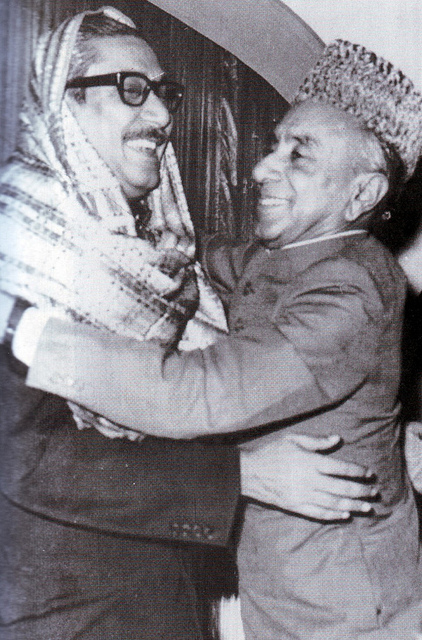
The social profile of these students – the third generation of Sindhi nationalism – was not fundamentally different from that of the second generation. However, what distinguished them was the context of their political socialization, in which being able to use and face violence became an increasingly important quality. Many of the new Sindhi leaders, including the future cadres of the nationalist parties, were trained in this violent environment. Some of JSSF’s activists indeed developed new coercive methods. They intimidated Urdu-speaking students – especially at the time of the first “language riots” in 1971 and 1972 – and sympathizers of other political groups – the opposition to the 1973 constitution by nationalists pinned Sindhis against Sindhis. Weapons became available on campuses and used in isolated clashes or targeted actions. In the first instance of lethal violence, two students were killed at the University of Sindh in October 1973. In July 1975, some JSSF students abducted an Urdu-speaking provincial minister. In the 1980s, the use of weapons extended to collective action as political rivalries gave way to ethnic conflict, with each group – Sindhi, Mohajir, Punjabi – represented by its organizations. Emerging as a student leader increasingly entailed organizing protection and retaliating violently, but student organizations also engaged in protection racket and developed links with bandits.
In the late 1980s, the new turbulent leadership clashed with the old guard – the founders of the Jiye Sindh Mahaz – over violence, initiating a systematic and recurring process of fragmentation for the nationalist party. Other differences instilled division within the ranks: the question of the boycott of the electoral process, the place granted to non-ethnic Sindhis within parties and alliances, the links with criminal groups, and personal rivalries. Despite attempts at unification, factions within the Jiye Sindh Movement went from two in 1990 to about a dozen in the 2010s. Fragmentation led to the diversification of the repertoire of action of nationalist parties that claim G.M. Sayed’s heritage: some have abandoned the separatist goal and accept electoral politics; others follow non-violent non-electoral politics, in effect becoming pressure groups; and a small fraction has opted in the 2000s for armed struggle.
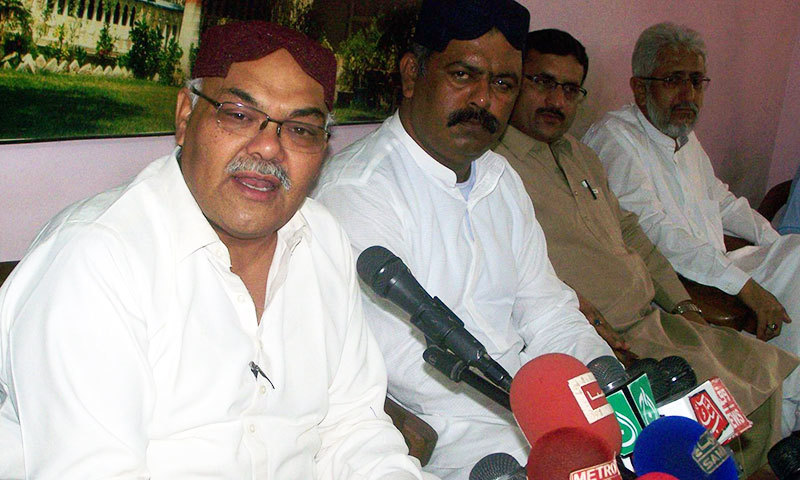
For the third generation, violence also came from the state. In November 1973, with the “disappearance” of a Hindu teacher from the University of Sindh, who was close to the Jiye Sindh Mahaz, Z.A. Bhutto initiated dealing with subversive political groups through extrajudicial killing, often named “enforced disappearances” in Pakistan. The various military operations initiated by the state from the 1980s in Sindh have often made an insufficient distinction between political opponents and criminals, thus creating widespread resentment within the population against the military.
Sindhi student leaders also distinguished themselves with their capacity to face violence and play a defensive role if needed, thus including violence in the repertoire of Sindhi nationalism. On September 30, 1988, a group of armed men on motorbikes drove through Urdu-speaking neighborhoods of Hyderabad and shot indiscriminately at people, leaving more than 250 dead, and initiating a series of killings against Sindhis in retaliation. Many think Qadir Magsi, the leader of the “Taraqqi Pasand” wing of the JSSF, had planned this move, along with the dacoit Janu Arain.
Ethnic violence contributed to segregating communities, as there was a significant migration of Urdu-speaking people who had settled in the countryside and the small towns of Sindh to the cities of Hyderabad and Karachi. Urban expansion established new ethnically homogeneous neighborhoods within these two cities, such as Latifabad and Qasimabad in Hyderabad.
The violent context within which nationalist activists were socialized left them more exposed than their elders to economic hardships. The overall atmosphere on university and college campuses deteriorated, pulling down the level and quality of education. The administration often closed campuses for months because of disturbances, increasing the duration to obtain degrees and lowering their value. Students who graduated from colleges and universities in Sindh were poorly trained to face the job market, with often poor spoken and written English and sometimes uncertain written Urdu. While many in the second generation had benefitted from Bhutto’s rise to power, young university graduates in Sindh in the 1980s risked being part of the urban proletariat in case of a failed social mobility. This situation was particularly the case for political workers who had been more involved in their activism than their studies. Moreover, because they boycotted most elections, nationalist parties had little to offer in terms of political career. Nationalist parties thus seemed to accept a role as pressure groups, able to raise issues then taken up by mainstream parties.
Combined with state repression and violent clashes with other groups, this made it difficult for nationalist workers to maintain their level of commitment. Many settled for one of the following three options to pursue their political engagement outside nationalist parties – when they did not simply go back to their village. Some chose to move abroad, mainly to the UK and the US, often both for political and economic reasons, and to take part in community organizations that lobby for Sindh’s auto-determination – the Sindhi Association of North America (founded in 1986) or the World Sindhi Congress (1988). Others joined the vibrant Sindhi vernacular media that emerged in the late 1980s and early 1990s: the editors and journalists working with the two leading Sindhi newspapers, Awami Awaz and Kawish, nearly all have been “comrades” (active in left and nationalist groups) in the past. Others still found employment within the budding network of NGOs, both international and local. The latter, such as the Pakistan Fisherfolk Forum, often work as advocacy and lobbying groups rather than development organizations. Since the 1990s, this network of political activists, NGO workers, and journalists, thrives in the Qasimabad neighborhood of Hyderabad – the center of the educated Sindhi middle class.
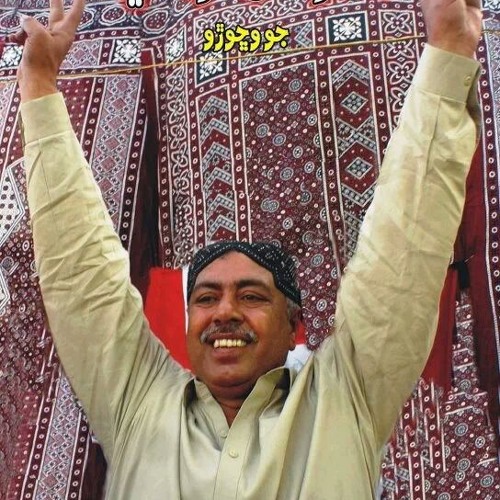
In the 2010s, many sympathizers remained in favor of the separatist cause and mobilized on specific occasions. The large “Freedom March” held in Karachi in March 2012 is a case in point. However, the chief organizer, the Jiye Sindh Qaumi Mahaz (Long live Sindh National Front), has lost ground since then. Its leader, Bashir Khan Qureshi, died in mysterious circumstances shortly after the march, precipitating the party into dynastic politics as his inexperienced 19-year-old son was promoted to the leadership position. Police and military operations initiated after Nawaz Sharif came to power in 2013 further rolled back the organizational capacity of nationalist parties and reduced their presence from public spaces. However, the crackdown on nationalist organizations did not destroy the networks and connections between like-minded people sympathetic to the nationalist cause.
Thus, as this section shows, Sindhi nationalism is not a reflex reaction that occasionally expresses itself in an anti-state outburst. Instead, it is a discourse centered on an idea of Sindh shaped by various political and social actors over a century. These actors built on their predecessors in defining what Sindhi identity means and how it is represented. They also added to the repertoire of action of nationalist organizations. It would be a mistake to reify “Sindhi nationalism”: the political demands based on the “idea of Sindh” changed according to the historical context. Yet the contributions of the three generations acted upon an idea of Sindh rooted in an ethnic understanding of human societies.
From the separation movement to supporting the Pakistan project, to attempts at building a loyal opposition and later separatist positions, the very idea that Sindhis constituted a cultural and historical entity that deserved a political existence remained the principal driver. At times, the idea of Sindh informed actions that sought to challenge the nationalist narrative promoted by the state. However, it was not always the case. The idea of Sindh seemed compatible with the Pakistan project to many Sindhis in the 1940s, and Z.A. Bhutto gave a central space to Sindh in his cultural policy predicated upon the idea of Pakistan being composed of four ethnic groups. (Continues)
____________________
Julien Levesque holds a Ph.D. (2016) in Political Science from Ecole des Hautes Etudes en Sciences Sociales (EHESS), Paris. His doctoral research focused on nationalism and identity construction in Sindh after Pakistan’s independence.
Courtesy: Brill
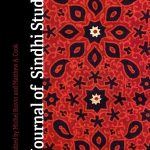 (Originally published by Journal of Sindhi Studies – Edited by: Matthew A. Cook (USA) and Michel Boivin (Paris). The primary focus of the Journal of Sindhi Studies (JOSS) is the Sindh region, located in southern Pakistan. However, Sindhis live in other parts of Pakistan as well as in India and across the globe. The journal accepts submissions that address the people of Sindh, regardless of their current geographic location. JOSS aims to shed interdisciplinary light on the “Sindhi World.”)
(Originally published by Journal of Sindhi Studies – Edited by: Matthew A. Cook (USA) and Michel Boivin (Paris). The primary focus of the Journal of Sindhi Studies (JOSS) is the Sindh region, located in southern Pakistan. However, Sindhis live in other parts of Pakistan as well as in India and across the globe. The journal accepts submissions that address the people of Sindh, regardless of their current geographic location. JOSS aims to shed interdisciplinary light on the “Sindhi World.”)
Click here for Part-I, Part-II, Part-III, Part-IV